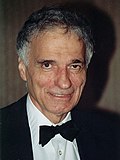| |||||||||||||||||||||||||||||||||
| |||||||||||||||||||||||||||||||||
Gore 50–60% 60–70% 70–80% 80–90% 90–100% | |||||||||||||||||||||||||||||||||
| |||||||||||||||||||||||||||||||||
| Elections in the District of Columbia |
|---|
 |
The 2000 United States presidential election in the District of Columbia took place on November 7, 2000, as part of the 2000 United States presidential election. Voters chose three representatives, or electors to the Electoral College, who voted for president and vice president.
Contents
The District of Columbia voted by an extremely large margin in favor of the D.C. born, Democratic candidate Al Gore with 85.16% of the vote. Bush got 8.95% with 18,073 votes compared to Nader who got 5.24% with 10,576 votes. [1] A total of 44% of the population came out to vote. [2] The District of Columbia has never voted for a Republican, however, one Democratic elector abstained from casting a vote, bringing the district's electoral vote total down from 3 to 2. The District and neighboring Maryland were the only jurisdictions where Gore improved upon Bill Clinton's performance.
This election is one of three occasions where only two electoral votes were cast by a place in a presidential election: the others were in Mississippi in 1820, as one of the state's three electors died before the Electoral College convened and there was insufficient time to find a replacement; and in Nevada in 1864 due to one of the electors getting snowbound and there being no law to replace him. [3]





